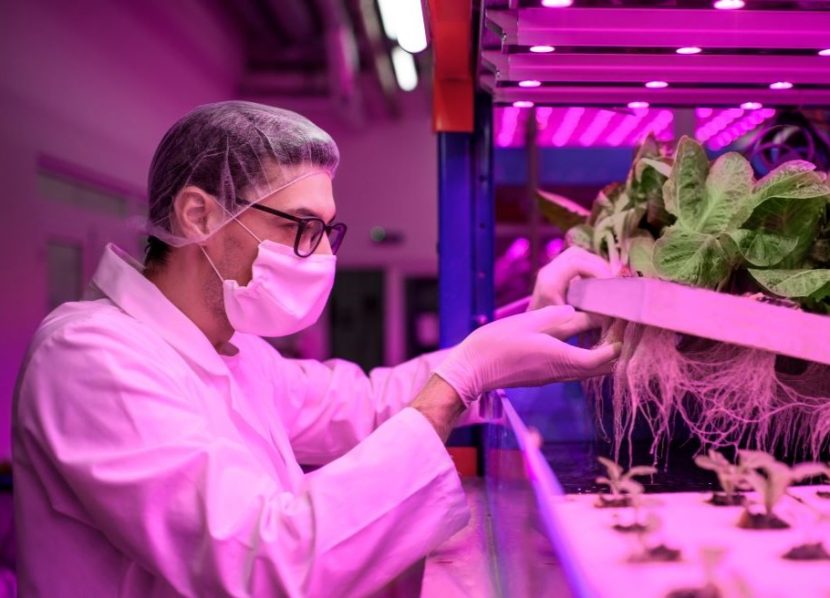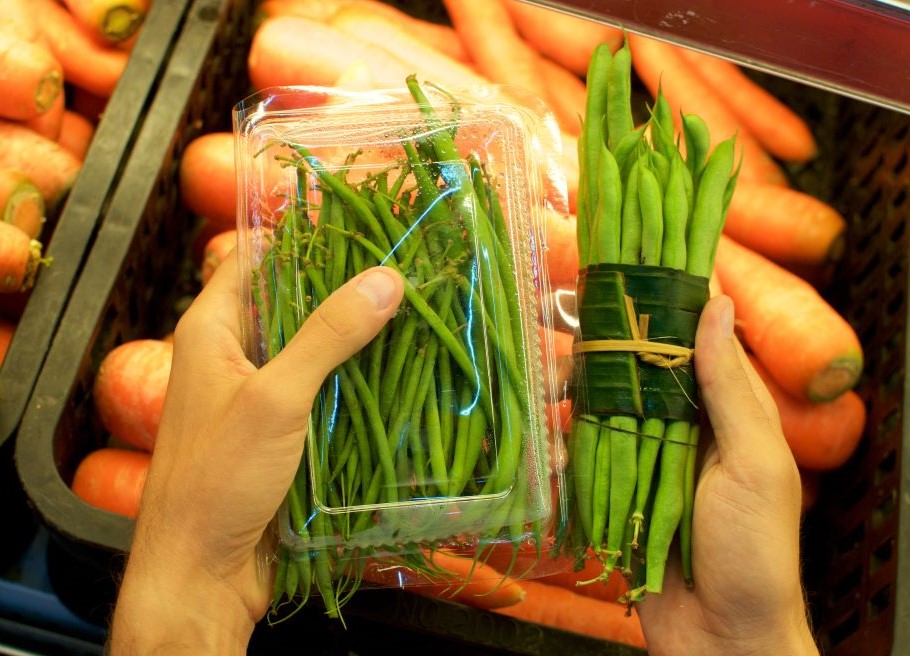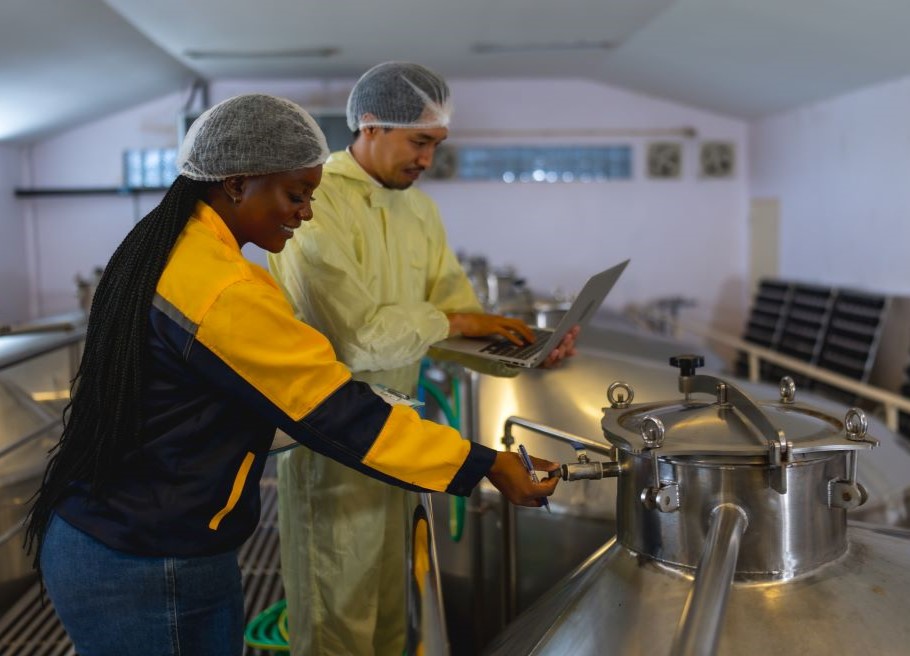Safeguarding Our Future: Where Food Safety and Sustainability Meet
By Anthony Raschke
As populations grow, resources deplete, and climate change accelerates, the need for innovative solutions to ensure the safety of our food supply while mitigating environmental impact is becoming more urgent than before.
Food production significantly contributes to environmental degradation, including deforestation, biodiversity loss, water pollution, and greenhouse gas emissions. Unsustainable agricultural practices – such as intensive monoculture farming, chemical inputs, and overexploitation of natural resources – exacerbate these environmental impacts. Addressing these challenges requires transitioning to more sustainable farming methods, such as agroecology, organic farming, and regenerative agriculture, which promote soil health, biodiversity, and ecosystem resilience.
Finding the right balance requires an approach that balances the environmental, social, and economic dimensions of sustainability, as well as prioritizing holistic solutions.
Agriculture accounts for a substantial share of global water use, putting pressure on freshwater resources and exacerbating water scarcity in many regions. Sustainable water management practices – such as efficient irrigation techniques, water recycling, and watershed conservation – are essential to ensure water security for food production while protecting aquatic ecosystems.
Similarly, sustainable land management practices are crucial for preserving soil fertility, preventing erosion, and enhancing carbon sequestration.
Food safety and sustainability are intrinsically linked to social equity and economic viability, particularly in the context of small-scale farmers, rural communities, and food workers. Promoting fair labor practices, equitable access to resources, and safe food handling practices are essential for building resilient and sustainable food systems that prioritize the well-being of all stakeholders. Empowering marginalized communities, supporting smallholder farmers, and investing in local food systems can help reduce inequalities, improve livelihoods, and enhance the overall sustainability of the food supply chain.
“Achieving food safety and sustainability requires a holistic approach that considers the interconnectedness of our food systems,” said Dr. David Katz, Founding Director of the Yale-Griffin Prevention Research Center, in the Fixing Food 2018 report. “By promoting sustainable farming practices and prioritizing food safety measures, we can create a more resilient and equitable food ecosystem.”
Finding the right balance requires an approach that balances the environmental, social, and economic dimensions of sustainability, as well as prioritizing holistic solutions.
Consumer demand plays a significant role in driving changes in food production and consumption patterns, influencing the adoption of sustainable and ethical practices by food producers and retailers. Educating consumers about the links between food safety, sustainability, and health can empower them to make informed choices and support sustainable food systems through their purchasing decisions.
Promoting transparency, labelling, and certification schemes can help consumers identify and choose products that align with their values and preferences for food safety and sustainability.
Further strategies for the integration of food safety and sustainability include:
Sustainable Food Production Practices
- Encouraging the adoption of sustainable farming methods, such as organic farming, agroecology, and conservation agriculture, that promote biodiversity, soil health, and resilience to climate change.
- Supporting agroforestry, crop diversification, and integrated pest management practices to reduce reliance on synthetic inputs, enhance ecosystem services, and mitigate pest and disease pressures.
Food Waste Reduction and Recovery
- Implementing measures to reduce food losses and waste at all stages of the supply chain, including improved harvesting techniques, storage facilities, and distribution networks.
- Investing in infrastructure for food recovery and redistribution, diverting surplus food from landfills to feed vulnerable populations and mitigate environmental impact.
Water Management and Conservation
- Promoting water-efficient irrigation techniques, such as drip irrigation and rainwater harvesting, to minimize water use in agriculture and alleviate pressure on water resources.
- Implementing measures to prevent water pollution and improve water quality, including the use of good agricultural practices, sustainable farming practices and wastewater treatment technologies.
Supply Chain Traceability and Transparency
- Implementing traceability systems, such as blockchain technology, RFID tagging, and QR code labelling, to track the origin, production, and distribution of food products and ensure transparency and accountability throughout the supply chain.
- Strengthening collaboration and communication among stakeholders, including farmers, processors, retailers, and consumers, to share information, identify risks, and implement effective food safety and sustainability measures.
Policy and Regulatory Frameworks
- Enacting and enforcing policies and regulations that promote food safety and sustainability. Food protection has traditionally been about protecting food from intentional and unintentional contamination. Is it time to change the scope to include food sustainability by investing in research, innovation, and capacity-building initiatives to develop and disseminate best practices, technologies, and tools for enhancing food safety and sustainability across the food ecosystem
Consumer Empowerment
- Consumers are becoming more empowered than ever before to drive change in the food industry by demanding transparency, sustainability, and ethical practices. Social media platforms and online food communities enable consumers to share information, raise awareness, and hold companies accountable for their actions.
- As consumers prioritize factors such as food safety, organic certification, fair trade practices, and carbon footprint reduction, food producers and retailers are compelled to adapt their practices to meet evolving consumer preferences, ultimately driving positive change across the entire food ecosystem.
Dr. Ricardo Salvador, Director of the Food and Environment Program at the Union of Concerned Scientists concludes that, “The intersection of food safety and sustainability presents both challenges and opportunities for transforming our food systems. By investing in research, innovation, and policy interventions, we can create a future where safe, nutritious, and sustainable food is accessible to all.”
From farm to fork, every step of the food supply chain offers opportunities to enhance food safety and sustainability, and it is up to all stakeholders to seize these opportunities and work together towards a common goal of building resilient, healthy, and sustainable food systems.
About the Author
Anthony Raschke is the Technical Director at EyeOnRisk. He is an internationally recognized food safety coach who endeavours to adapt complex technical content into practical information that food safety professionals can effectively apply and make positive contributions to how they manage food safety every day.

-
 FeaturedRisk management
The Cost of a Breach: What a Cyberattack Could Mean for Food Safety Recalls
FeaturedRisk management
The Cost of a Breach: What a Cyberattack Could Mean for Food Safety Recalls
-
 FeaturedRisk management
Securing the Food Chain: How ISO/IEC 27001 Strengthens Cybersecurity
FeaturedRisk management
Securing the Food Chain: How ISO/IEC 27001 Strengthens Cybersecurity
-
 FeaturedRisk management
Revolutionizing Food Safety Training: Breaking Out of the “Check-the-Box” Mentality
FeaturedRisk management
Revolutionizing Food Safety Training: Breaking Out of the “Check-the-Box” Mentality
-
 GFSI Standards
GFSI 2025: Building Trust, Tech-Forward Solutions, and Global Unity in Food Safety
GFSI Standards
GFSI 2025: Building Trust, Tech-Forward Solutions, and Global Unity in Food Safety
-
 FeaturedFood Safety
Integrated Pest Management: Strategies to Protect Your Brand’s Reputation
FeaturedFood Safety
Integrated Pest Management: Strategies to Protect Your Brand’s Reputation
-
 FeaturedFood Safety Culture & Training
No Open Door Policy: Challenges That Impact Pest Control in Food Processing Plants
FeaturedFood Safety Culture & Training
No Open Door Policy: Challenges That Impact Pest Control in Food Processing Plants




